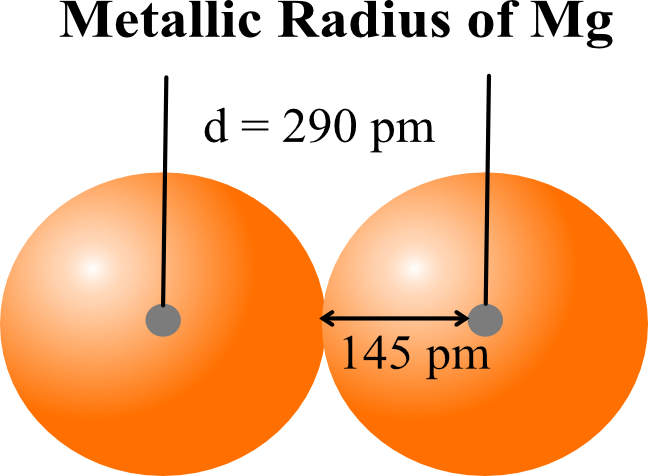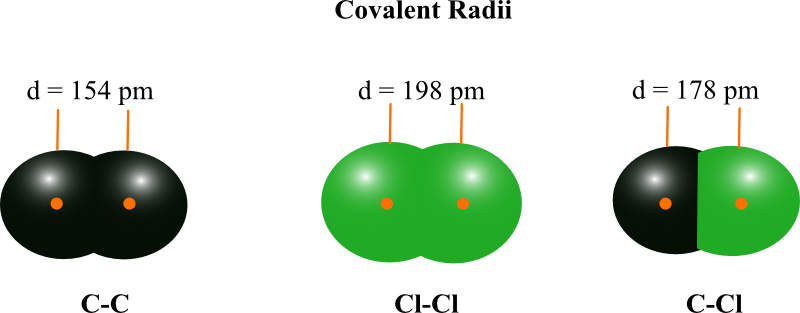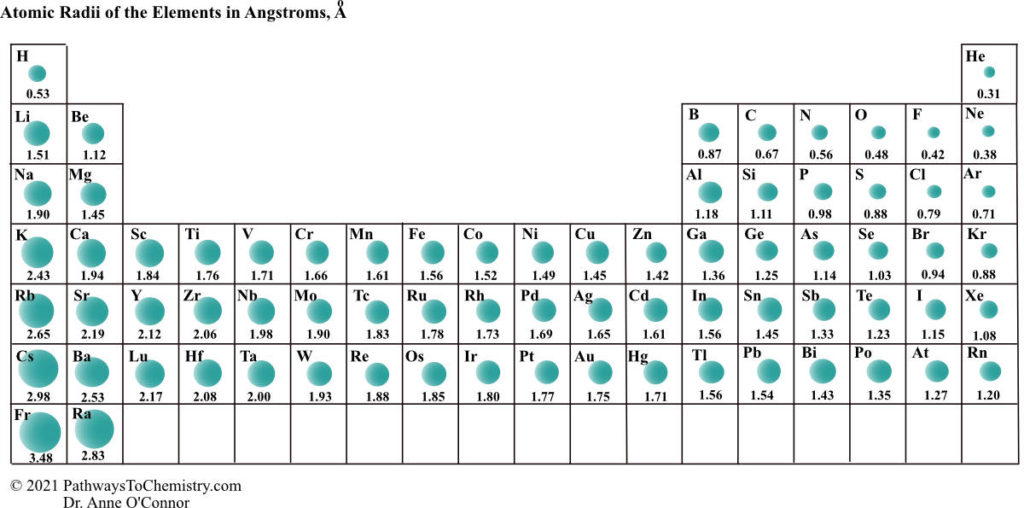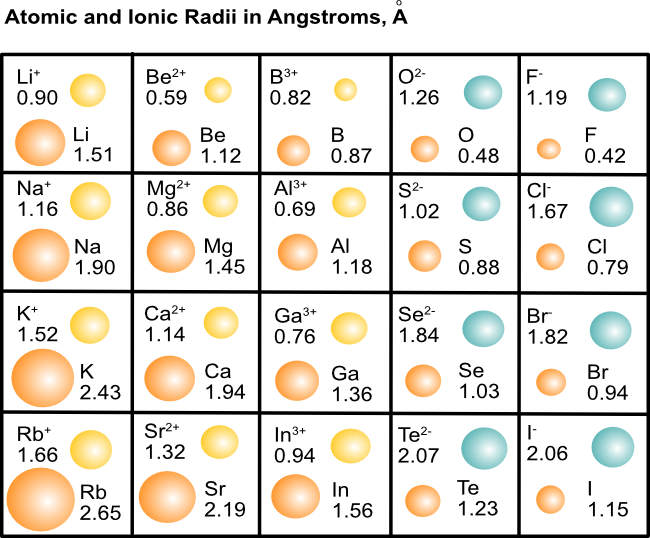We have already learned how to use the periodic table to write electron configurations and orbital box diagrams. Here we discuss atomic and ionic radii and the periodic trends.
Ideally, atomic radius would be measured from the nucleus of the atom to the electron(s) in the outermost shell. However, we know we can not know the exact position of an electron or electrons in the outermost shell.
The atomic radius is measured as half the distance between the nuclei of two identical atoms that are bonded. We see that \(\frac{1}{2}\)d of the carbon-carbon bond is equal to \(\frac{154}{2}\) = 77 pm. For the Cl-Cl bond, the radius of the chlorine atom is \(\frac{198}{2}\) = 99 pm. For the carbon-chlorine bond, the distance between the two nuclei is 99 pm + 77 pm = 176 pm.
We can see in the figure below that atomic radius decreases as we move across a period and increases as we move down a group on the periodic table.
Going down a group on the periodic table successively larger valence shell oribtals are occupied by the electrons. For example, in Group 1A, Na has a valence shell of 3s while Rb has a valence shell of 5s. When going across a period, Zeff increases, therefore, the atomic radius decreases going across a period. In Period 2, lithium has a +3 nuclear charge and fluorine has a +9 nuclear charge. Recall that as electrons are being added so are protons. The electrons in the same shell do not shield well, therefore, we see a decrease in atomic radius as we go across a period.
A cation is smaller than its parent atom. For example, Na loses one electron from the 3s orbital, the valence shell, to form Na+. The electron configuration for the sodium atom is 1s22s22p63s1. The Na+ ion configuration is 1s22s22p6 or [Ne]. If Al loses three electrons to become Al3+ ion, the electron configuration is [Ne].
Anions are larger than their parent atoms because when one or more electrons are added, the repulsions between electrons push them further from the nucleus. If S gains two electrons, the electron configuration is [Ar] and when F gains one electron, the electron configuration is [Ne].
We see in the figure below, cations increase in size when going down a group and they decrease in size when going across a period. Anions decrease in size when going across a period and increase in size when going down a group.
Main group metals lose electrons and attain an electron configuration of the noble gas that precedes it on the periodic table while non-metals gain electrons with the anion attaining an electron configuration of the noble gas that succeeds it on the periodic table.
Exercises
Exercise 1. Use the periodic table to order the following sets of elements in increasing atomic radius:
b) Te, O, S, Se, Lv
c) Sr, Na, Cr, P, F
Exercise 2. Which is larger? Mg2+ or Br–
Exercise 3. Order the following ions from smallest to largest.
Se2-, Sr2+, Br–, Rb+
Exercise 4. The ions and atoms, Ca2+, K+, S2-, Cl–, and Ar, are isoelectronic. Are they different or the same in size? Explain.
Check Solutions/Answers to Exercises
Back to Periodic Trends and Ionic Compounds
Back to General Chemistry 1 Study Guides
Back to Home Page





Would you mind if I used your image of the periodic table with ionic radii in a set of my notes? I teach advanced geometry and am creating a lesson involving ionic radii. Thank you for your academic contribution, I look forward to your response.
Yes, you are welcome to use the image for your notes with a citation.